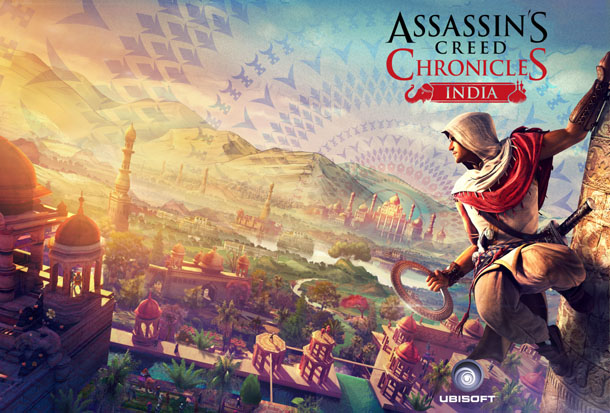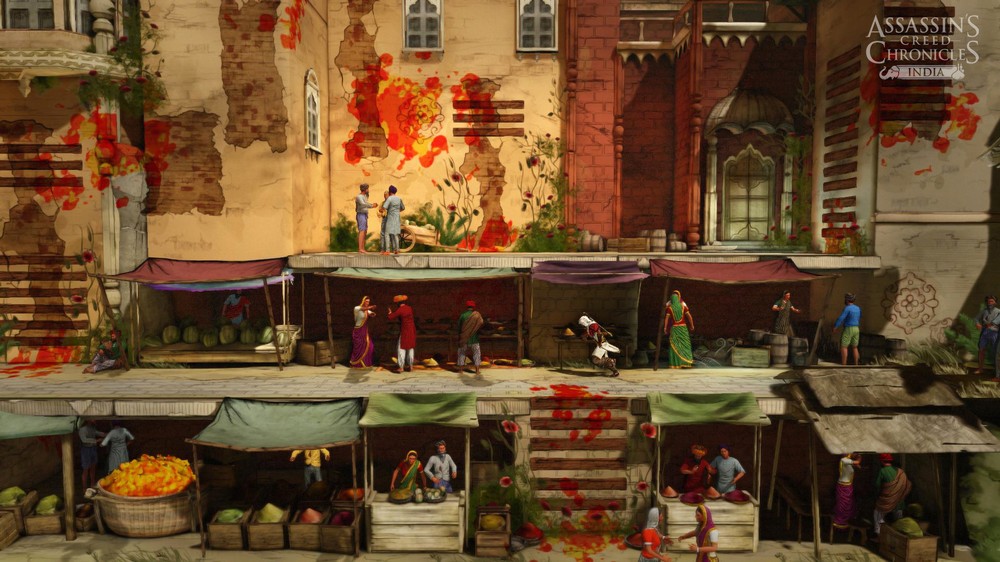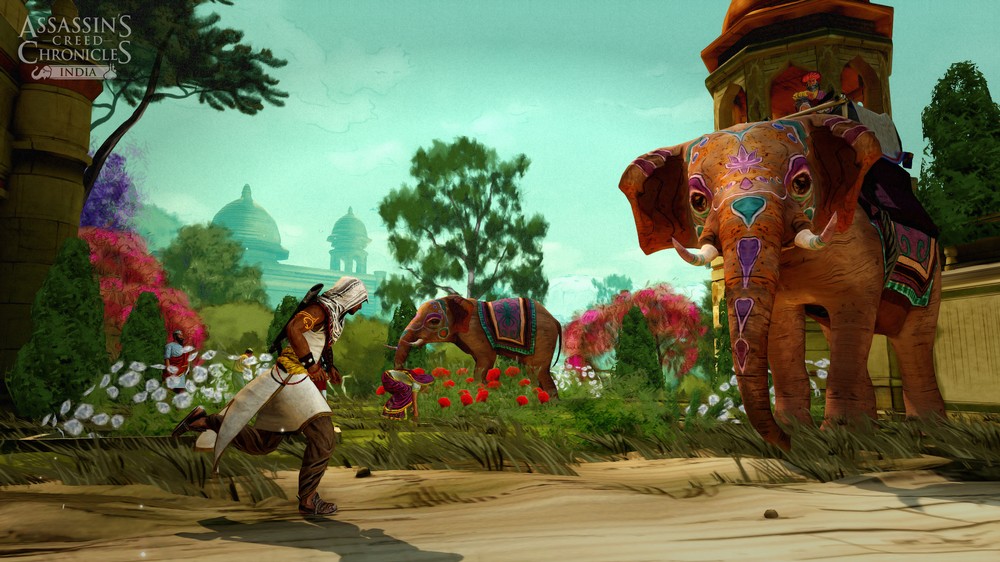I was less than five minutes into Ubisoft’s second installment of their Assassin’s Creed Chronicles trilogy when I started having this irresistible craving to play some Prince of Persia. There was something about those gorgeous hand-painted graphics and the classic side-scrolling action that had me flashing back to the 90’s, dodging saw blades and dancing over spiked pits. But where Prince of Persia was more about precision arcade platforming, Assassin’s Creed Chronicles: India slows things down to an almost painfully stressful stealth experience. Toss in a poorly developed story and some awkwardly optional combat and you have a recipe for regret.
Initially, the game lures you in with colorful graphics that make the original China game look like pencil sketches. The artistic cutscenes look like parchments found at a Marco Polo flea market and the game levels are alive with lush detail. As far as 2.5D platformers go, this is a shining beacon when it comes to artistic vision and authentic cultural flavor.
Sadly, you start to lose interest and motivation about the time the tutorial is over. The story is weak, the hero, Arbaaz is underdeveloped, and he is mostly reduced to bad one-liners you’d expect from an Expendables movie. Major players are introduced early on then never mentioned again until the very end, while the hundreds of cloned henchmen that stand between you and victory spout repetitive canned lines of dialogue while you eavesdrop and observe their patrol patterns.
The original China game arguably had its own share of minor issues, but at least they nailed the perfect mix of platforming, action, and stealth. In India each screen seems to come off as an elaborate puzzle with one (maybe two) solutions. The repetitive task of luring and separating guards to thin their numbers or sneaking past them using environmental aids like ledges or the conveniently placed trellis starts to wear thin about halfway through the game – if not sooner. Death is a frequent visitor due to some questionable controls, and checkpoints are irregularly places, so dying can force you to replay significant portions of a level.
When stealth tactics inevitably fail, you are left to deal with the equally confounding combat controls. The hit/block/counter system is not unfamiliar to anyone who has played the 3D Creed games or any other combat game released since Batman perfected the concept. Sadly, the interactions with enemies aren’t always reliable, so blocks and counter attacks often fail to trigger.
Assassin’s Creed Chronicles: India looks fantastic and when it’s firing on all cylinders there are admittedly some fun and challenging moments to be had. I really enjoyed the collectible system and the way the map screen shows you key locations without spoiling too much of the discovery elements. I still like whistling from a cart and mugging a guard or smoke-bombing a tiger in a cage or crawling under elephants draped in elegant blankets. But with the odd technical glitches, control issues, and environmental snags, I was more stressed out by the threat of a random bug than any robed henchmen.
Perhaps I am being unusually harsh, but India is the second game in the trilogy, and you only expect things to get better with each subsequent release. China laid a solid foundation, but India failed to build upon it, so I can only hope that Russia can bring the series home with some style and polish that the franchise deserves.



















